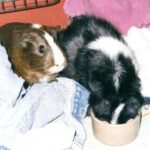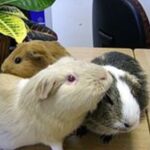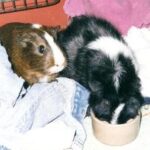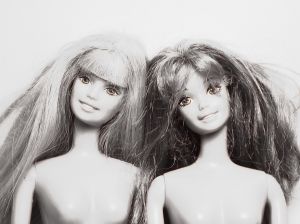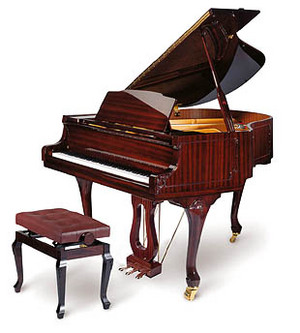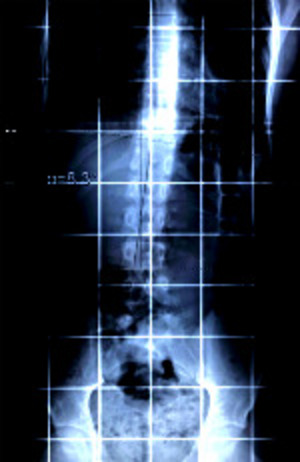The Abyssinian Satin is one of the most beloved guinea pig breeds approved by the American Cavy Breeders Association and their parent organization, the American Rabbit Breeders Association. It wasn’t accepted as a separate breed until the 1986. This is a breed rarely found in pet stores, but can be found at guinea pig rescues, cavy shows and specialized breeders. Please try and adopt a guinea pig rather than buy one in order to reduce the number of homeless guinea pigs in your community.
Brief History
It’s unknown when the first Abyssinian Satin appeared. They could have appeared centuries ago when guinea pigs were first domesticated by the Incas. It is known that the Incas produced many cavy breeds (some for their flavour as opposed to their looks and some as sacrifices for particular gods), but it is not entirely known what colors or fur types they bred.
Abyssinian guinea pigs are neither pigs nor are they from Abyssinia. They were probably given the exotic sounding moniker in order to sell them. Now, the name has stuck. The Abyssinian’s whorled coat was probably the first variation from the usual smooth-haired cavy.
Satins were first developed as a breed in the short haired breeds (known as American, English or Smoothie, depending on who you ask). These brilliant colored piggies had almost a metallic sheen to them, no matter what color or pattern they appeared in. Satins can also be found in the bristly-haired Rex or Teddy, and in the long-haired Peruvian and in the mostly-long-haired Silkie (which does not have hair covering the face, like a Peruvian).
Since guinea pigs were first sent to Europe by Peru’s conquerors, they have had more time to develop and bring out any recessive genes, such as for a super-shiny coat. New breeds like the Abyssinian Satin tend to pop up first in Europe before they appear in North America.
General Description
Ideally, a representative of this breed should combine the rosettes of the Abyssinian guinea pig with the sheen and silky feel of a Satin guinea pig. Guinea pig (or cavy) breeders have been trying to get Satin versions of all standard guinea pig breeds. In the Abyssinian Satin, a good balance between scruffiness and showiness is reached.
Abyssinian Satin cavies can have numerous rosettes along their body and on the top of their heads, but very few are show quality. These piggies need to have at least eight clearly defined rosettes. Ideal specimens have ten rosettes of exactly the same size symmetrically arranged on the body.
Abyssinian Satins come in any color or pattern that Abyssinian or Satin guinea pigs come in. These include self (or solid) colors like black, red or white. Patterned colors include Dutch, brindle, roan, agouti, tortoiseshell or tortoiseshell and white.
References:
Guinea Pig: Your Happy, Healthy Pet, Second Edition.” Audrey Pavia. Howell Book House; 2005.
“All About Breeds.” Tracy Iverson. “Guinea Pigs.” Bow Tie Press; 2005.
American Cavy Breeders Association. “Abyssinnian Satin.” http://www.acbaonline.com/breeds/abyssiniansatin.html
